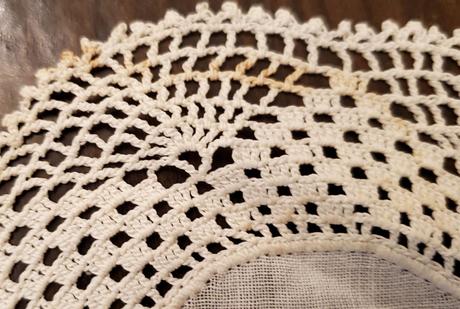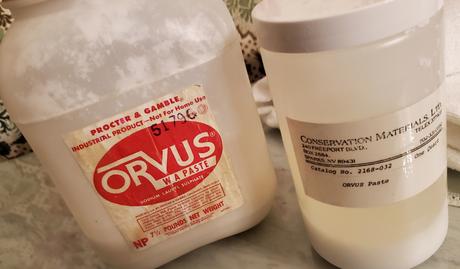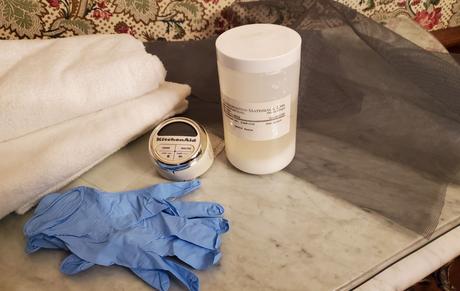This two-part post from guest blogger Linda Bussey, Director of the Hower House Museum in Akron, discusses how to care for vintage textiles like linens and table cloths.
Imagine inheriting a collection of vintage linens from a favorite auntie. Perhaps she was the most influential person in your life—a bit eccentric, ahead of her time—a colorful character who influenced the YOU of today. Of course, honoring and keeping her memory alive is now emotionally invested in those textiles. No pressure here!
This blog will give you a starting place when dealing with vintage textiles, much of it learned from one of those eccentric, special people in my own life. I try to honor her memory by teaching others what I learned then and since. (Thank you, Sue!)
Start by separating the textile pieces according to their use—pillowcases, dresser scarves, hand towels, doilies, tablecloths and napkins— and then assess the condition of each individual piece. Take your time and be gentle. Remember that someone made each of these items. They have a history and had a life before they came into yours.

Some pieces may be in great shape, others not so much. In the era these vintage goodies were made, it was a common practice to store old linens ironed and starched within an inch of their life, using a homemade solution made from potatoes, rice or sugar water. Along the way, the items may have been stored in less than optimal conditions—damp basements, attics, cardboard boxes, in old suitcases or trunks. None of these situations bodes well for old textiles; the starch attracts insects and mice, resulting in damage.

At this point I should tell you that old textiles should be stored as you would your best clothing—in a cool, dry place, away from direct sunlight and extreme heat or cold.
If your linens are in good shape, great! If not, some mending and/or stain removal may be in order. Minor repairs—small holes, tears, fraying or loose edging—will need your attention before cleaning. If you are unsure how to repair antique or vintage fabrics, best to ask around; find someone to teach you. Be aware that hand sewing takes a bit of patience, but is a useful skill.
After this initial review of the pieces and mending if necessary, proceed with a gentle washing of your textiles. How do you determine what may be safely washed? We know that cotton, linen, and poly blend cottons may be safely washed by hand; never machine wash fragile, vintage, or antique fabrics. If they are light in color, do not wash with dark fabrics. Some of the old dyes that were used were unstable and may “bleed out” in the wash process. For example, if you have a dark blue blanket, you would not wash that with a light-colored dresser scarf. You see where I’m going with this, right? You could end up with a blue blanket and a light blue dresser scarf.
If you are not sure if the pieces should be washed, ask a professional. What do I recommend to use for your own personal collection? A mild soap called Orvus WA paste. A white, creamy paste that comes in a large container, it can be purchased from a museum supply store, but the more economical source, believe it or not, is your local farm supply store! Orvus WA is used as a horse shampoo, concentrated yet gentle. It only requires a small amount for a batch of linens, so share with a friend because a container will last you years, unless you have several horses to shampoo on a regular basis!


See the below reference guide for a more detailed list of basic supplies and detailed instructions on all phases of textile care.
My next post will deal with the “aftermath” of the washing process, such as how to safely press and store your newly-cleaned treasures. Truly not as boring as it sounds!
Online resources http://anacostia.si.edu/exhibits/online_academy/academy/preserve/preservemain.htm
https://www.ohiohistory.org/preserve/state-historic-preservation-office
Books
Hamby, D.S. The American Cotton Handbook. 3rd ed. New York: John Wiley & Sons. 1965.
McGehee, L. Creating Texture with Textiles. Iola, WI: Krause Publications. 1998.
Morton, W.E. and J.W.S. Hearle. Physical Properties of Textile Fibres. 4th ed. Cambridge, England: Woodhead Publishing Ltd. 2008
Pizzuto, J.J. Fabric Science. 11th ed. New York: Bloomsbury Publishing. 2015.
